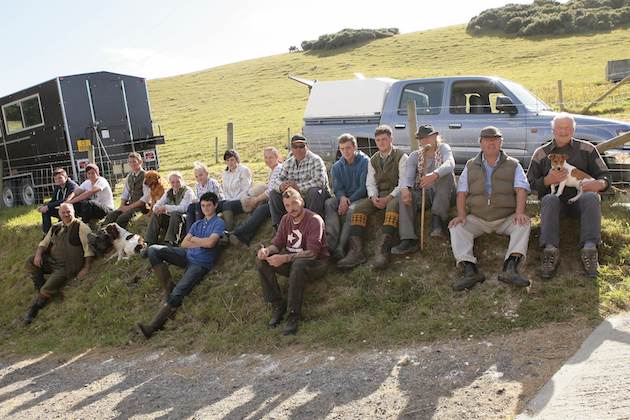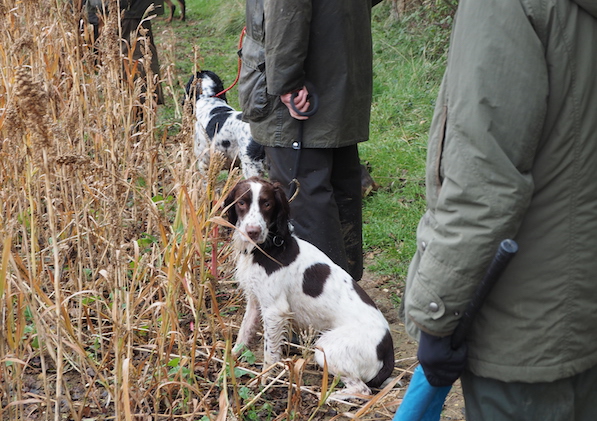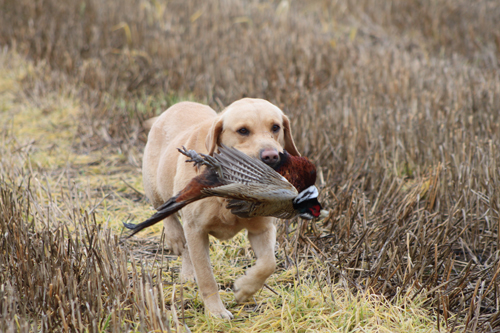If it’s your first time out, then your fellow beaters and pickers-up will show you the ropes. In the meantime,…
Win CENS ProFlex DX5 earplugs worth £1,149 – enter here
Dogs in the beating line need to be the best of all
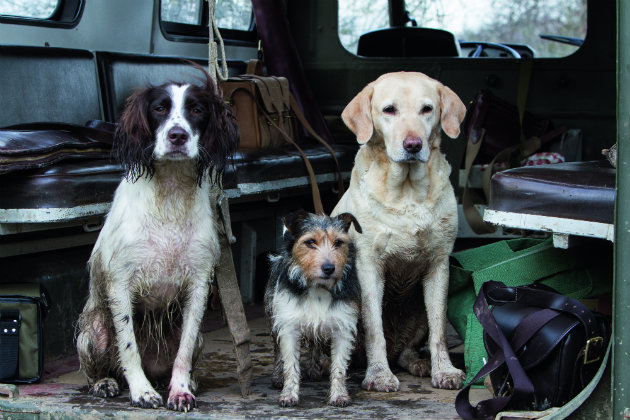
If you were to look at the hierarchy of gundogs in the shooting field, you would more than likely consider dogs that work in the beating line at the bottom of list. But, in fact, they probably need to be the best trained of all the gun dogs in the field and they certainly work the hardest. All breeds can work in the beating line but it would be hard to better a well-trained hard-going spaniel.
Dogs in the beating line
There are two main requirements to a good beating dog, they must hunt close and be totally steady to both ground and feathered game. If you plan to do a lot of beating with your dog right from the beginning, you should have encouraged and conditioned it to hunt close. One of the best ways to do this is by hiding tennis balls in an area for the young dog to find, they soon learn that by staying nice and close to you, the handler, they will always find something, and learn to realise that there is no point in pulling away from you as there will be nothing to find. Time spent in a rabbit pen, or if you have a gamekeeper that will let you use a release pen, will be invaluable in getting your dog totally steady. If you are only interested in using your dog for beating, you may consider to not train it to retrieve at all. I know of a few handlers who have taken this route and it works for them. It goes without saying that it should “be on the whistle” – both the stop and turn whistle.
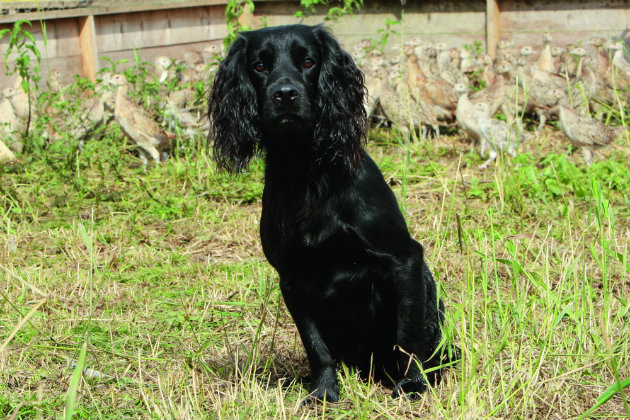
It would be hard to better a well-trained hard-going spaniel
First day preparations
First things first, you can do all the training and have your young dog spot-on, but it is practically impossible to recreate the atmosphere of a shoot day, especially the beaters’ wagon. Your young dog’s senses will be overwhelmed, if you ever have a chance, have a look in the back of a full beaters’ wagon at the dog’s eye level. All you will see is a mass of legs, bags and strange dogs, add all that to the general noise and commotion, it can be very daunting for a young dog. I always like to sit at the back of the trailer with a new dog and that way he can see out of the back, but more importantly he isn’t hemmed in and I can get in and out without having to take him past strange dogs, it just helps to keep the dog calm and focused on what is to come.
Getting ready for the drive
Obviously shoots vary in their organisation. Some smaller shoots can be at best a haphazard affair and, at the other end of the scale, the larger, more organised shoots can be run like a military operation. The important thing to remember is that you have (hopefully) spent a lot of time and effort in training your gundog and you need to be self-disciplined and set out your own ground rules for working your dog.
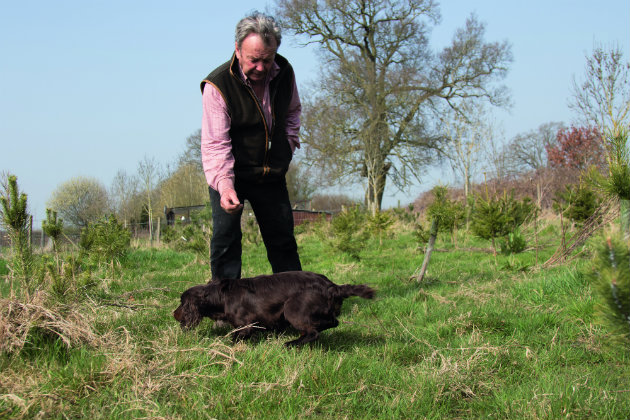
In training, encourage and condition your dog to hunt close
I would always walk to my position in the beating line with my dog on the lead, that way I know where it is and the dog is not wandering off and free hunting. Unless you have been lucky enough to train with a group or a gundog club and set-up “mock” beating lines, the chances are that this will be the first time your dog will have experienced flags cracking, sticks tapping and the inevitable distraction of handlers shouting at their dogs. You need to watch your dog to see how it is reacting to all the commotion. If it is a sensitive dog you may find you just need to give it some reassurance, on the other hand if it is a hard-going dog it may go the other way and get very worked up.
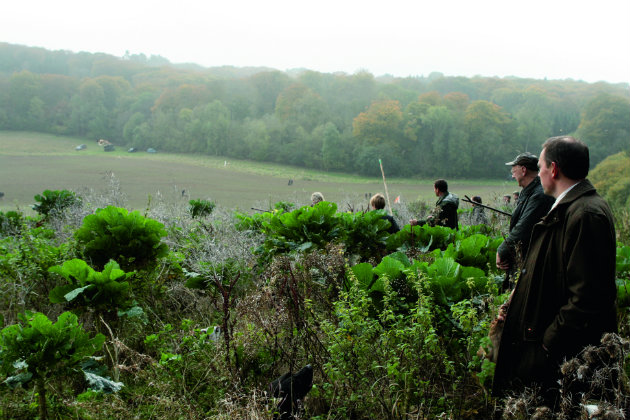
This may be the first time your dog experiences the distractions of a beating line
When you are given the okay to start moving, click your dog off to get him hunting and be ready to pip that turn whistle to keep him nice and tight. Generally beating lines are not gundog friendly, they move too fast especially if there are more non-dog handlers than beaters with dogs. Ideally everyone should give the dogs time to work the cover, but that doesn’t always happen and as a result you can end up pushing your dog on too quickly. Just try and control this as best as you can while staying in line with your fellow beaters.
At some point your dog is going to get a flush and you have to decide what you want the dog to do. If you have done your training properly it should stop to the flush but if you are on a large shoot it is going to get a lot of flushes and will you want it to stop each and every time? Some handlers are happy if the dog flushes, ignores the bird and carries on hunting provided it stays under control. This is fine if you are only ever going to beat with your dog, if you plan to shoot over the dog then you really do need it to stop to the flush. You also have to really watch the dog as the more contact it makes with game the “hotter” it will get and you may lose all control and will suffer the consequences.
Flushing points
If all goes to plan you will eventually reach the flushing point. Depending on the type of shoot you are on, that can mean there may be anything from 20 to 200 or more birds in front of you and your dog. The simple advice is to call your dog up and either put it on the lead or keep it at heel. On most shoots the birds will be trickled out over the Guns and this can be done by the tapping of sticks and then you may hear the person in charge of the beating line give the command “let your dogs go”, this is to find and flush the last few birds. For a young, inexperienced dog this is a recipe for disaster, the chances are various dogs will end up free hunting in a free-for-all and you don’t want all your hard work undone, so keep your dog at your side and under control.
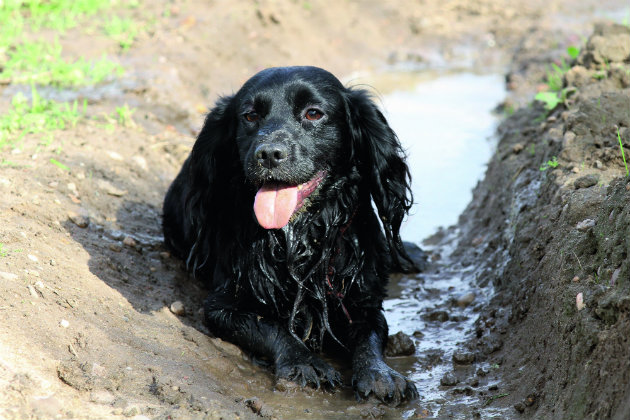
A shoot day is a long, hard day for a young dog
A shoot day is a long, hard day for a young dog and the chances are that it will be the first time that he will have been working for that length of time. During the day you may well see his reactions start to tail off and he may become less responsive to both whistle and verbal commands, if this happens just call him up and give him a break. You may even find that it is beneficial just to give a young dog half-a-day’s work rather than a full day. Remember you will hopefully have nine to 10 years’ work out of your gundog, so there is plenty of time and no need to rush the early days.
Graham Watkins runs Gamegoer Gundogs and has been professionally training gundogs for more than 35 years. He has competed in Field Trials and working tests, with several dogs achieving Champion and Winner titles.
Beating a gundog’s first time anxiety
Here are five tips to lessen gundog anxiety on those first few times in the beating line. 1. Keep close…
A guide to gundogs on the beating line
Paul Rawlings shows you how to ensure you have the best gundogs on the beating line
I’m training my gundog for beating, what should I expect?
My dad bought me a gundog, which I’m training, and I would like to take him beating this season.
Related Articles
Get the latest news delivered direct to your door
Subscribe to Shooting Times & Country
Discover the ultimate companion for field sports enthusiasts with Shooting Times & Country Magazine, the UK’s leading weekly publication that has been at the forefront of shooting culture since 1882. Subscribers gain access to expert tips, comprehensive gear reviews, seasonal advice and a vibrant community of like-minded shooters.
Save on shop price when you subscribe with weekly issues featuring in-depth articles on gundog training, exclusive member offers and access to the digital back issue library. A Shooting Times & Country subscription is more than a magazine, don’t just read about the countryside; immerse yourself in its most authoritative and engaging publication.






